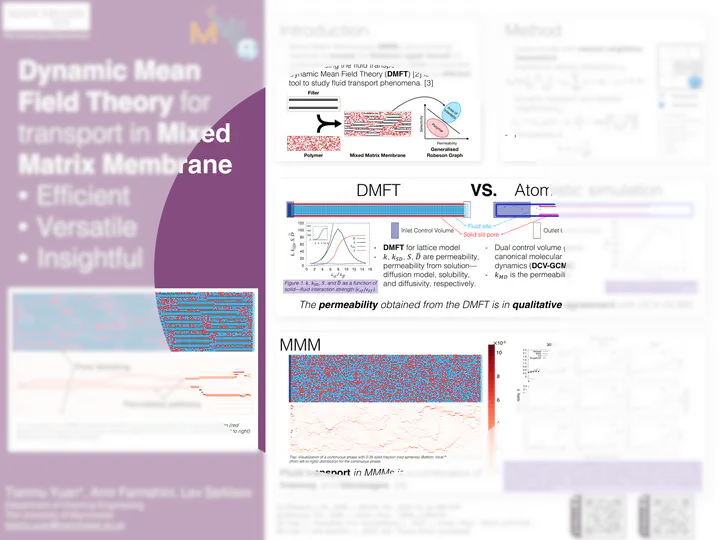Application of dynamic mean field theory to study fluid transport in membranes

Abstract
Mixed Matrix Membranes (MMMs) is a promising class of materials for challenging gas separations using membrane processes. By judiciously combining properties of two materials, the filler with advantageous permeability and selectivity, and the polymer with good processibility, it is possible to achieve separation performance which exceeds the Robeson boundary for many cases. The fundamental understanding of the transport and adsorption processes in MMMs on a molecular level is, however, lacking. This prevents a more systematic search for materials and conditions, which could further improve the performance of MMMs. Although detailed molecular simulations of MMMs systems started to emerge recently, they need to operate on substantial time and length scales to be realistic, and therefore remain expensive.
The alternative approach is proposed here by using a more computationally efficient Dynamics Mean Field Theory on a lattice model of the MMMs system. Previously, we have demonstrated that DMFT can be used to study fluid transport in simple slit pores and showed that the results are qualitatively comparable to the off-lattice model.
In this presentation, we expand the previous studies to several systems representing MMMs. Using this approach we explore transport phenomena in MMMs as a function of the architectures for the polymer and filler phases, gas composition, solid-fluid interactions and other parameters of the system that may influence perm-selectivity and permeability. We further probe how accurate the classical models for transport phenomena, such as those based on the Maxwell theory, are in predicting the transport properties of model MMMs.